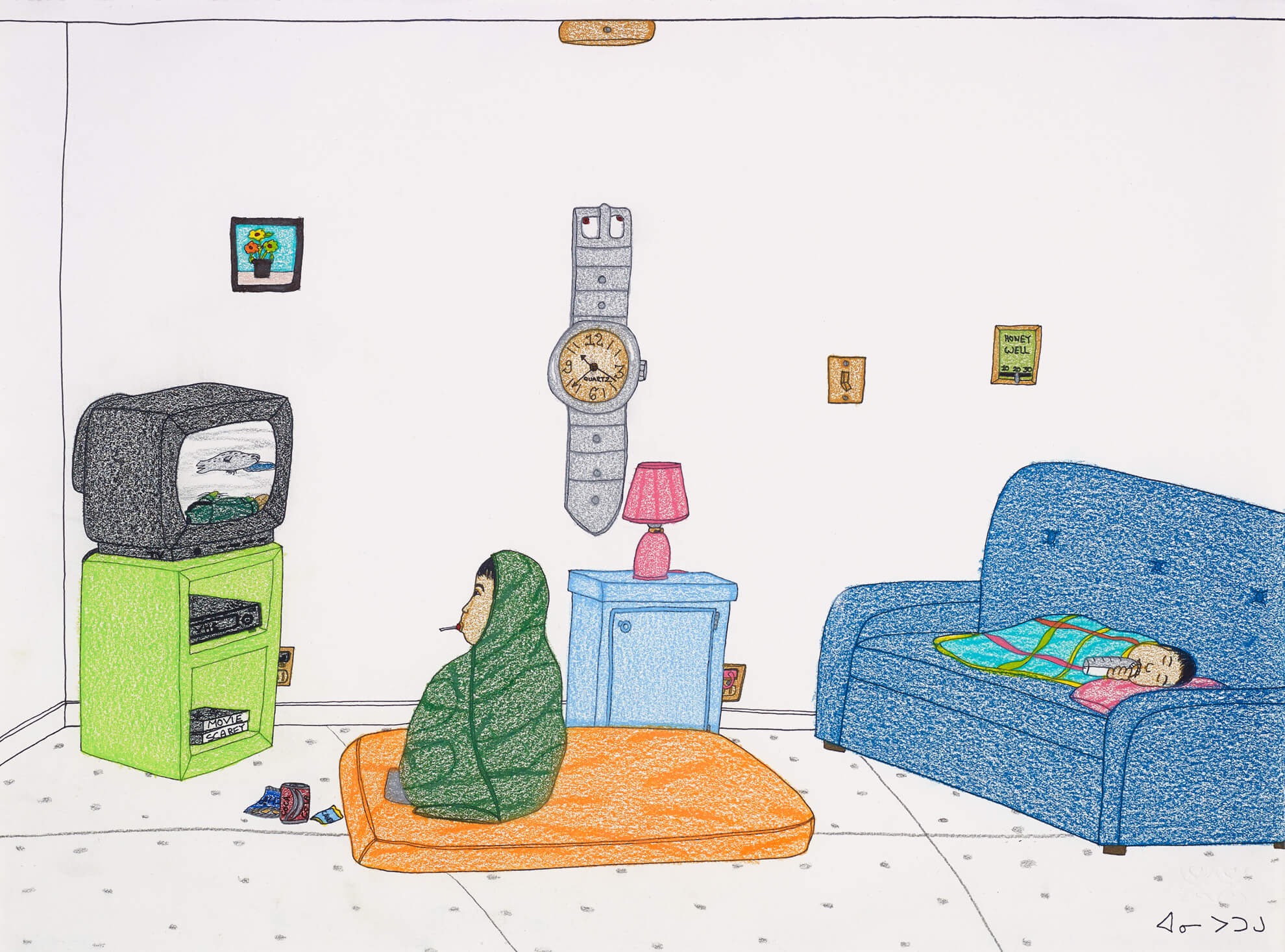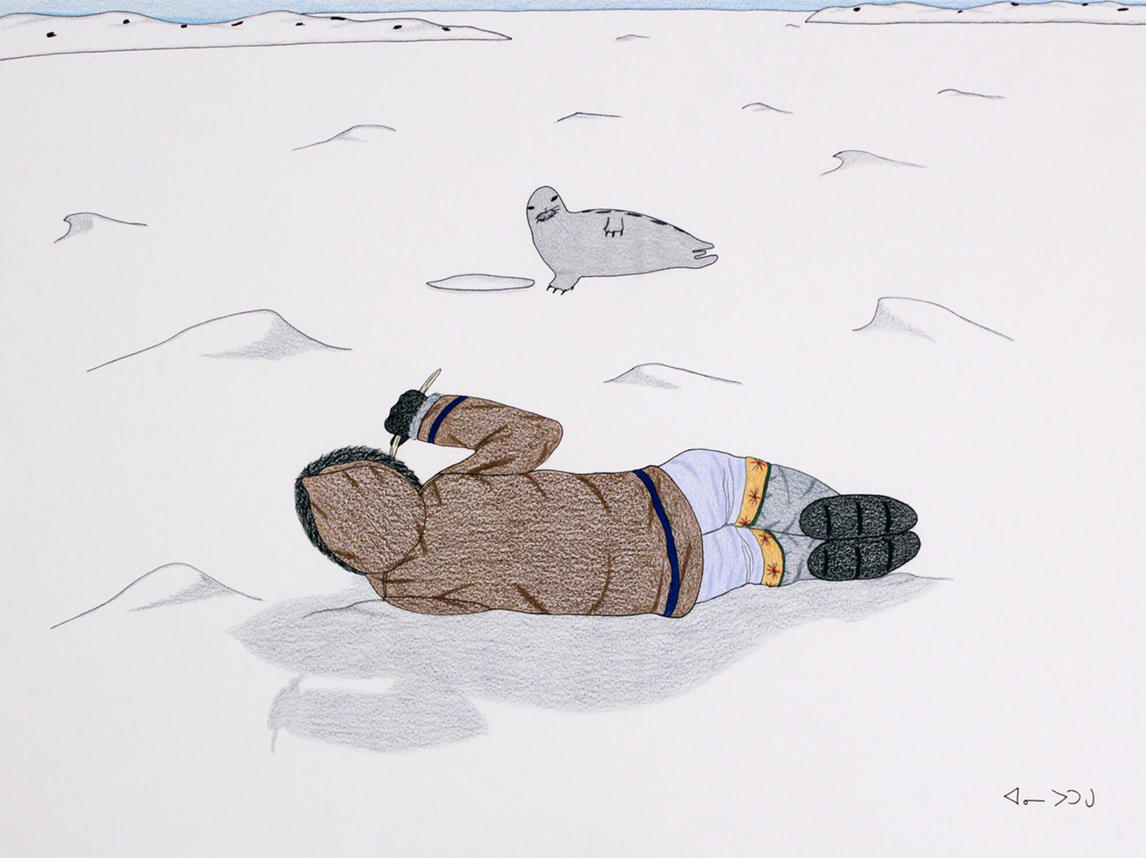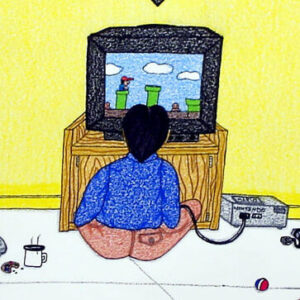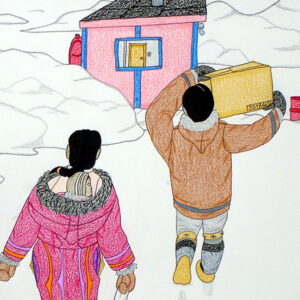Watching Hunting Shows 2004

Annie Pootoogook, Watching Hunting Shows, 2004
Coloured pencil and ink on paper, 51.5 x 66 cm
Collection of John and Joyce Price
Watching Hunting Shows is an interior scene with a twist. A young child wrapped in a green sleeping bag sits on an orange mattress sucking a lollipop as he watches television. His infant sibling rests on a couch behind him. On the wall hang a simple picture of flowers in a vase and a Pop art–style clock in the form of a huge wristwatch. A small pink lamp stands on a blue side table; above the couch, a wall thermostat is set to a comfortable temperature. Amidst this unremarkable modern decor, the child is watching a seal hunt, a kill that could be happening at that very moment somewhere near Annie Pootoogook’s home community of Kinngait. Annie addressed hunting in other drawings as well, for example Hunter Mimics Seal, 2006.

The drawing Watching Hunting Shows is one of Annie’s most compelling: the image of a child watching traditional hunting practices on television in his modern living room in Nunavut centralizes economic and cultural presence in this visual story. Since the designation of Nunavut as a territory in 1999, its education system has been guided by the aim of grounding Nunavut society in Inuit Qaujimajatuqangit, the people’s traditional framework of beliefs, laws, principles, values, skills, and knowledge. The intention is that over time this set of initiatives will help restore collective Inuit pride and increase individual self-esteem. Television programs like the one the child in this drawing is watching are carried on local stations, and they are meant to advance the aims of Inuit Qaujimajatuqangit.
Seen in this light, Watching Hunting Shows highlights the efforts in Nunavut to preserve and revive not only hunting but also other traditional activities such as sewing and throat singing. It suggests that future generations will be enabled to learn traditional practices, but perhaps by relying on technology rather than through instruction from the community’s Elders. As a result, the hope that many Inuit place in these efforts may also be tinged with regret for lost attachments to the traditions of the Elders, losses brought about by colonialism and social dislocation in the North. Annie’s own unsentimental realism, however, discourages us from reading too strong a feeling of nostalgia into this drawing, for there is no denying her keen eye for irony and the pointed use she makes of the interaction of cultures in her work. The child in the centre of the frame who is sucking on the lollipop is also guarding some snack wrappers and a can of Coca-Cola as the seal is killed in living colour on television and the infant on the couch is feeding peacefully from a baby bottle.

 About the Author
About the Author
 More Online Art Books
More Online Art Books
 Acknowledgements
Acknowledgements